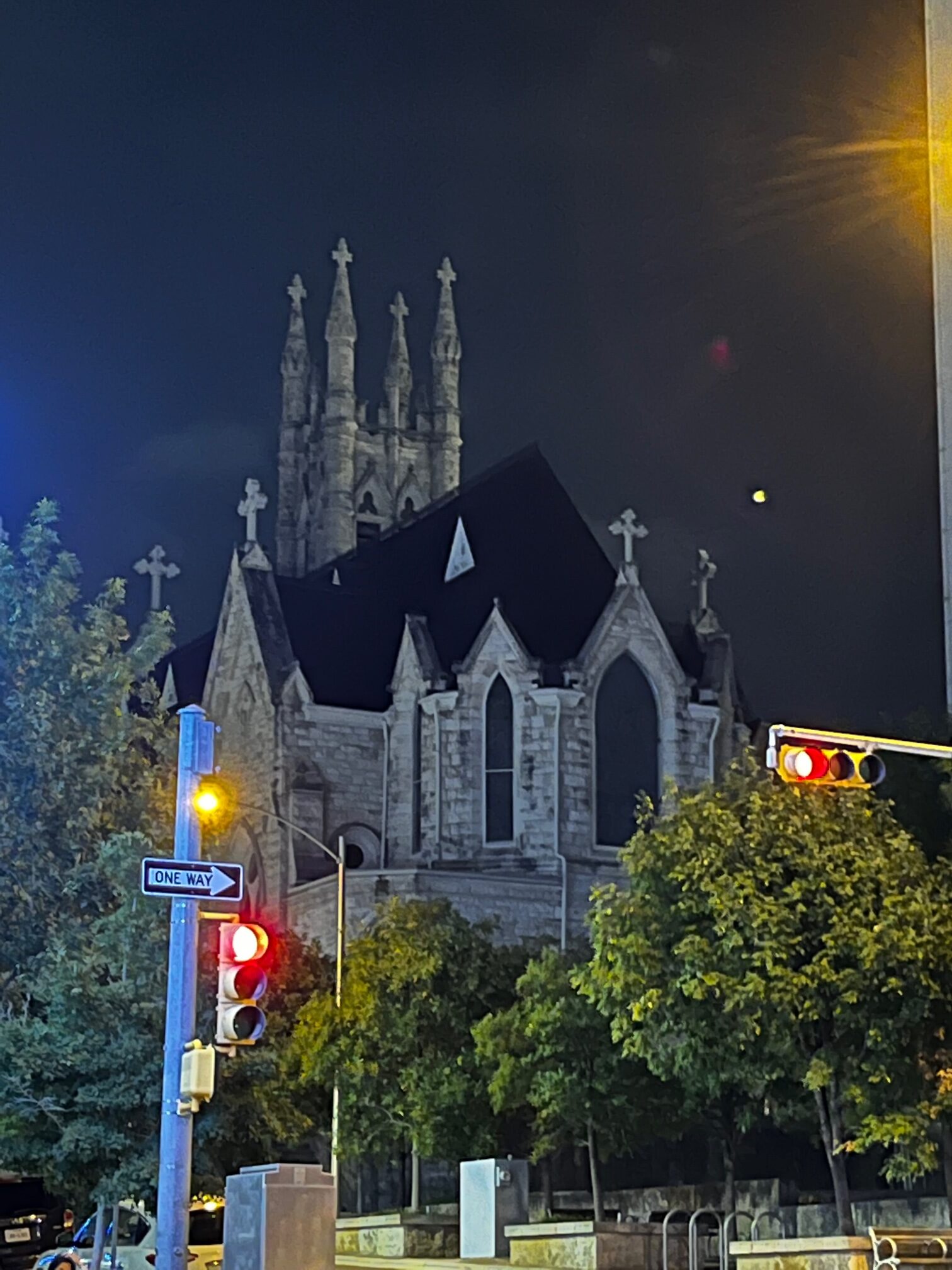The St. Mary’s property includes an entire city block. There is the church on one side and on the other side a school. The choir director at Saint Mary’s Church in Austin invited tour guide Monica to a reading room in the area occupied by the school because he believed it to be haunted.
The reading room is above what was once a full kitchen. Today after renovations the kitchen is more like a coffee room and there is no equipment to bake. In the reading room several staff members have experienced the smell of what they described as brownies.
Monica recorded the story of the suspected ghost while she and the choir directer were in the reading room. You can hear them walk into the room and almost immediately you can hear what sounds like monks singing. The church is too far away for any music to be heard if there was a mass, which there was not. The director nor Monica heard the singing. It was only audible on the recording device when Monica listened to it later.
Have a listen because WOW! Father Joseph was a monk with a sweet tooth who lived at Saint Mary’s and made brownies ALL THE TIME. After his passing the fantom aroma began. The singing can be heard when the director talks about the brownies. Click below to listen.
There other ghosts at Saint Mary’s including the lady in the choir. The building has a long history. This is what their website has to say about their past:
-
The origins of Saint Mary Cathedral date back to the 1850s, when the Catholic community in Austin (then the new state’s temporary capital with a population of around 600) built a small stone church named St. Patrick’s on the corner of 9th and Brazos streets. In 1866 the church was renamed Saint Mary, and the parish decided they needed a new church and could afford masonry construction. In 1872, after Austin was made the permanent capital of the state, the parish laid the cornerstone for a new church, choosing a location one block north of the original building.
The parish had laid out a basilica-shaped foundation and begun raising the walls, which were five feet high, when architect Nicholas Clayton began to design their new church. Eventually to become the foremost Victorian architect in Texas , Clayton had never designed a church and Saint Mary’s was his first independent commission. Born in Ireland in 1840, Clayton learned masonry and building design in Cincinnati and came to Galveston in 1872 on behalf of his Ohio firm. At the time, Austin was part of the diocese of Galveston , and it may have been through the Holy Cross fathers that the bishop connected Nicholas Clayton with the first Catholic parish in Austin . This church began Clayton’s long, prolific career centered in Galveston , building primarily ecclesiastical structures but also commercial buildings and homes.
A devout Catholic who attended daily mass, Clayton designed buildings for the Congregation of the Sacred Heart, the Jesuits and the Ursuline Sisters as well as numerous parishes throughout the diocese of Galveston and elsewhere in the South, including the Bishop’s Palace in Galveston (1886), Sacred Heart Church in Tampa (1888) and St. Edward’s Main Building in Austin (1907).
The Cathedral’s design repeatedly evokes natural places where men encounter the divine: in the tree-like columns with their foliage-carved capitals, the tracery of vines and leaves in the murals and the floral topped finials like the forest. The pointed arches on doors and windows and the spires remind us of mountains. The elevated ceiling and the blue dome spangled with stars reflect the sky and the heavens.
Each detail of the facade alludes to Catholic doctrine: the triangles express the Holy Trinity; the lily, the purity of the Blessed Virgin whose statue surmounting the door welcomes all who approach. Behind her, the rose window with its elegant tracery and stained glass reminds believers of the incarnation penetrating all matter with energy and light. The bell tower recalls the psalmist exulting, “Thou art my refuge, a strong tower against the enemy.” Ps. 61:3. The bells themselves, one from the first church, the other given in 1886, “shout with joy to God.” Ps. 65:1. The cross-topped spire announces the victory of the resurrection to all who see it in the urban skyline.
Those who open the massive wooden doors cross the threshold from the distracting world into a space where everything speaks of the Body of Christ. The sanctuary itself is shaped like a nave, a ship, a favorite image for the church. Full of worshippers at mass, it resembles the boat full of fish that the apostles caught after they obeyed the Risen Lord’s command to place their nets in the water.
Originally this parish belonged to the diocese of Galveston . When the new Diocese of Austin was formed in 1948, this became the church from which the new bishop would preside. Because the bishop is the successor to the apostles, sent to preach the gospel, his church is called a cathedral from the Latin word “cathedra,” the chair from which he presides. At that time, the church was remodeled, many of its neo-Gothic decorations were removed and the neo-Gothic altars and altar rail were replaced with 20th century marble and the baldachino with its cactus and bluebonnets, evocative of Central Texas .






